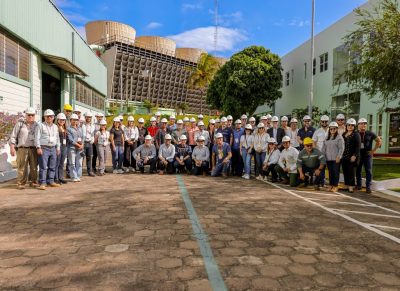“Geothermal production on a hot streak”, so a new report
In a new report launched by Emerging Energy Research, it is said that "Geothermal energy production is on a hot streak, and the U.S. is leading the way."
In a new report launched by Emerging Energy Research, it is said that “Geothermal energy production is on a hot streak, and the U.S. is leading the way.”
About 9,000 MW are said to be in the global pipeline and would would nearly double the current installed capacity of 10,500 MW – which took 30 years to build.
The United States, already the largest geothermal producer in the world, accounts for 4,400 MW, or 42 percent, of that growth. About 120 new projects are under development in 12 Western States. These projects will more than double U.S. capacity in five years.
World leader, yes. But geothermal produces less than one percent of total U.S. electricity supply. And its untapped potential is just huge, there the report refers to the infamous MIT study.
Southeast Asia, with an estimated 40,000 MW of geothermal potential – led by the Philippines and Indonesia – is attracting developers from around the world. Topping the list of emerging markets are New Zealand, Chile, Argentina, Turkey and Mexico.
Currently, there are over 215 commercial geothermal projects operating in 24 countries.
Most, if not all, involve “conventional” geothermal mining, which relies on finding underground reservoirs that are bubbling with naturally ocurring steam or hot water.
But the future of geothermal lies in something else entirely – deep drilling and a breakthrough technology called enhanced geothermal systems (EGS).
EGS are “unconventional” geothermal systems that require engineered reservoirs to become economical from a lack of water and/or permeability in the rocks.
Their allure is that they can be built all over, not just in regions blessed with spewing geysers. And that makes geothermal a potentially massive contributor to the reduction of global warming emissions. How could it not be?
It’s clean, base-load power from an indefinitely available domestic source that isn’t transient like solar or wind: the heat under your feet.
Money remains the main barrier. The Emerging Energy Research report states that $30 billion in capital is needed to transition the entire pipeline into operation.
Those are hefty-up-front costs. But the plants won’t end up being as expensive as you think. Greg Reid, director of Clean Technology at Wellington West Capital Markets, explains in an interview with the Energy Report:’A lot of people think that geothermal is a more expensive form of energy, but the reality is it’s more expensive than some other things up front, but when you look at it over the life of the plant, the operating costs are low and there’s no fuel price risk, so it’s actually at least as cost competitive or better than a lot of other energy sources.’
Further, a March report by investment bank Credit Suisse looked at the “levelized cost” of various energy sources – the total cost to produce a given unit of energy – and guess what it found? Geothermal energy is actually cheaper per kilowatt-hour than coal-derived power.
Its cost: 3.6 cents per kilowatt-hour, versus 5.5 cents per kilowatt-hour for coal, the analysis concludes. And it didn’t even take into account coming carbon pricing in the U.S. Think how much cheaper geothermal will be when that day comes.
In the world of renewables, geothermal has long played second fiddle to wind and even solar. But all three are growing by leaps and bounds.
And with the growing push back on coal, likely CO2 regulation and other favorable investment factors, it’s just a matter of time before geothermal goes from energy dark horse to darling.”
Source: SolveClimate











